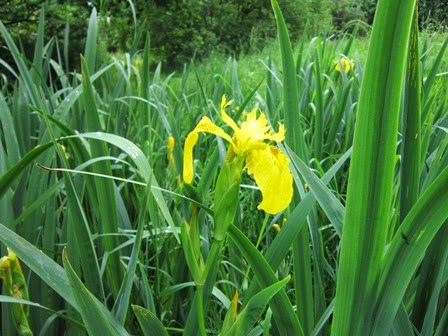Over the last four years, the Environment Trust has worked with
Richmond Park to clear Sidmouth Wood of invasive rhododendron plants. Several
hundred volunteers have participated, including corporate volunteers from
Cisco, and groups of children and teachers from the Challenge Network and
Marymount International School.
Most of the woodland is closed to the public to minimise
disturbance to the wildlife, but the so-called ‘Driftway’ through the middle of
the wood is open to the public. In late 2014, contractors cleared some of the
largest rhododendron plants from this area. The results are dramatic and quite
surprising to anyone who was familiar with the woodland prior to the work being
carried out.
To aid the recovery of the woodland, and to increase the
species richness, the Environment Trust’s volunteers spent the morning planting
a range of species: oak, ash, rowan, field maple, elder, dog rose, crab apple,
hawthorn, blackthorn and hazel.
While the trees will take some time to grow, and no doubt
many will not survive to maturity, the Driftway is certain to green up when
spring arrives and dormant seed material germinates. There will no doubt be
plenty of rhododendron seedlings to remove, a task that will keep volunteers
busy for years to come.
This area used to be filled with large rhododendron plants.
Volunteers, including a group of sea scouts, helped plant the area with native trees and shrubs.
Several hundred new whips were planted.
Despite a flurry of snow, the weather cooperated.
This is what the path used to look like. Although slightly magical, it is not much good for native wildlife.


























































